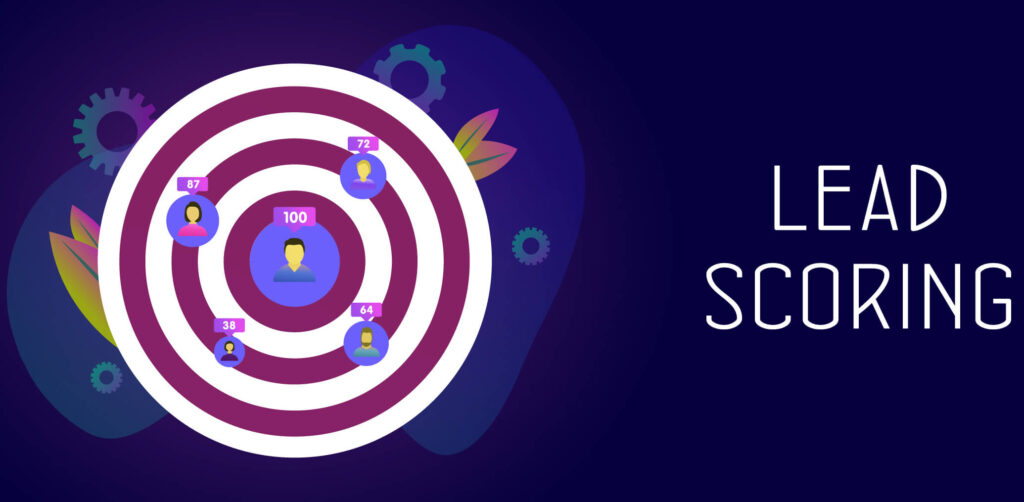Your lead scoring strategy for a great Customer Engagement

- marketing
- May 27, 2021
- Categories: Blog
- Tags: Customer Engagement
Facebook
Twitter
LinkedIn
Most people will tell you that the most important thing in business is customer acquisition. And up to a point, this can’t be wrong. That is until you put customer engagement into your business equation. Customer engagement is all about holding onto the customers you already have and all the steps you will be taking in the process of building a relationship with them.
And the best way to start with your customer engagement would be to create a straightforward strategy for this, to serve as a roadmap on how to increase customer satisfaction by having valuable interactions with them across channels.
You know the problem.
You’ve got tons of leads making their way through your pipeline and you’re following up with every single one. But your conversion to paying is still low. So, what’s really going wrong? The most common answer is that you’re following up (and wasting time) with poor-quality leads–the people who submit an inquiry without any motivation to purchase from you. There’s one thing that could be your saving grace: a lead scoring model. Lead scoring allows you to tell which prospects are worth your time and which aren’t and it allows you to do so systematically rather than by what “feels right” at the time. And these are the key steps to help you put it into practice.Lead segmentation
Similar to marketing segmentation, you can start by grouping people into lead categories that define their interest scores, typically three:- the ones you should leave behind
- the ones you should continue engaging with but aren’t ready to buy and
- the hot prospects that need a final push to become your customers
Why is lead scoring so important to your business?
Although you know that you should keep following up with prospects who’ve shown interest in your service or product, you don’t exactly know who to follow up with, as 70% of leads and sales are lost because of poor follow-up practices. And lead scoring might offer a solution for those very struggles, with the top benefits of companies that use lead scoring being a more measurable return on investment (ROI), an increased conversion rate, and higher sales productivity and effectiveness. Lead scoring, in other words, provides the segmentation engine that your marketing automation activities need to thrive. That’s why 68% of highly effective marketers counted lead scoring as a top contributor to their revenue, or why companies who use lead scoring regularly see a 77% higher lead generation ROI than their non-lead-scoring counterparts.Your lead scoring strategy
Here are the steps you should take to unleash your business lead-scoring potential:Draw the right personas
All good things start with personas. The trick is to start broad before you go narrow. There are people who consistently engage with your content marketing efforts. They click on your ads, read your blog posts, and comment on your stuff. However, these people aren’t necessarily buying from you yet. Those will have different characteristics from the loyal customer with the highest lifetime value. There are distinct differences. There are reasons one group has purchased, and the other is on the fence. Whatever the case, customer segments and personas are high-level groups of people who are interested in your content, services, products, and business at various levels. To determine who your target market is, ask yourself:- What is the identity of my company and what problem does it solve, holistically?
- Who experiences those problems and is likely to engage with my company regularly?
- Who has purchased, who hasn’t, and why (for each)?
- What language / messaging tone, style, audience, and intent has worked or failed?
- Who are they?
- What do they want?
- Where are they coming from?
- When do they engage with you the most?
- Why are they interested in you?
Define your Ideal Customer
The most important part of the lead scoring process is determining the characteristics of people who are most likely to buy. There are three basic types of criteria you should consider.- Explicit criteria / Information that tells you who the person is and whether or not they fit into your ideal client mold, measuring things like customer potential size, location, past purchases, job title.
- Implicit criteria/ Behavioral data that tells you how interested someone is in your service, product, or business, with metrics like number of phone calls. time-on-page, website visits, webinar attendance, email/chat interactions.
- Negative criteria / Information about leads that aren’t interested in you, with occurrences as low email open and click-through rate, long inactivity periods, very little engagement, any unsubscribes to previous campaigns.